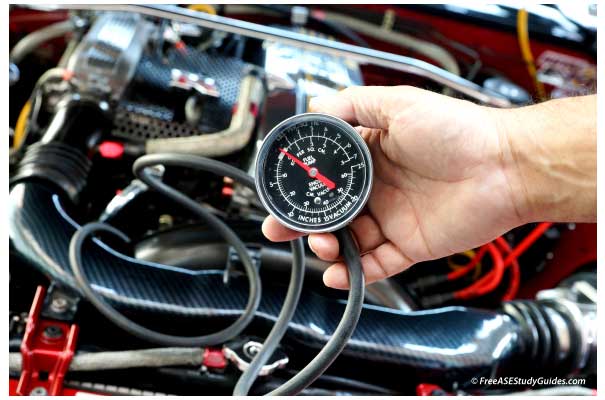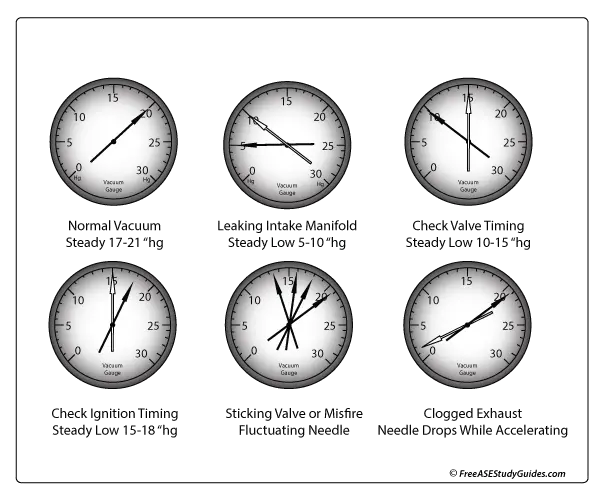Engine Vacuum Test

Intake manifold vacuum is the difference between the air pressure in the intake manifold and the outside atmosphere. To check manifold pressure with a vacuum gauge, locate a port on the manifold or throttle body. Manufacturers install ports on their manifolds of different sizes and for many reasons. Find one small enough for the vacuum gauge line to slide onto firmly.
Vacuum Gauge Readings

* Vacuum is measured in inches of mercury vacuum ("hg vacuum). For every 1000 ft. of increase in altitude, 1 "hg is subtracted from the vacuum gauge reading.
Normal Engine: On a normal engine, accelerate to 2000 rpm and then quickly release the throttle. The engine should return to a steady 17-21 "hg vacuum.
Steady low between 5-10 "hg vacuum: This indicates that the engine has a leak in the intake manifold or the intake gasket. This leak should be easy to find because it would make a loud hissing noise.
Steady low between 10-15 "hg vacuum: This reading indicates late valve timing. There's a good chance the vehicle has jumped timing. Check the timing belt or chain, depending on the application.
Steady low between 15-18 "hg vacuum: This just low reading indicates retarded ignition timing. Advance the timing to correct this problem.
Fluctuating Needle: A fluctuating needle indicates there's a problem with a valve or there's an engine misfire.
Needle drops during acceleration: If the needle drops steadily during acceleration, there's a restriction in the exhaust or intake. This result is typically due to a clogged catalytic converter.